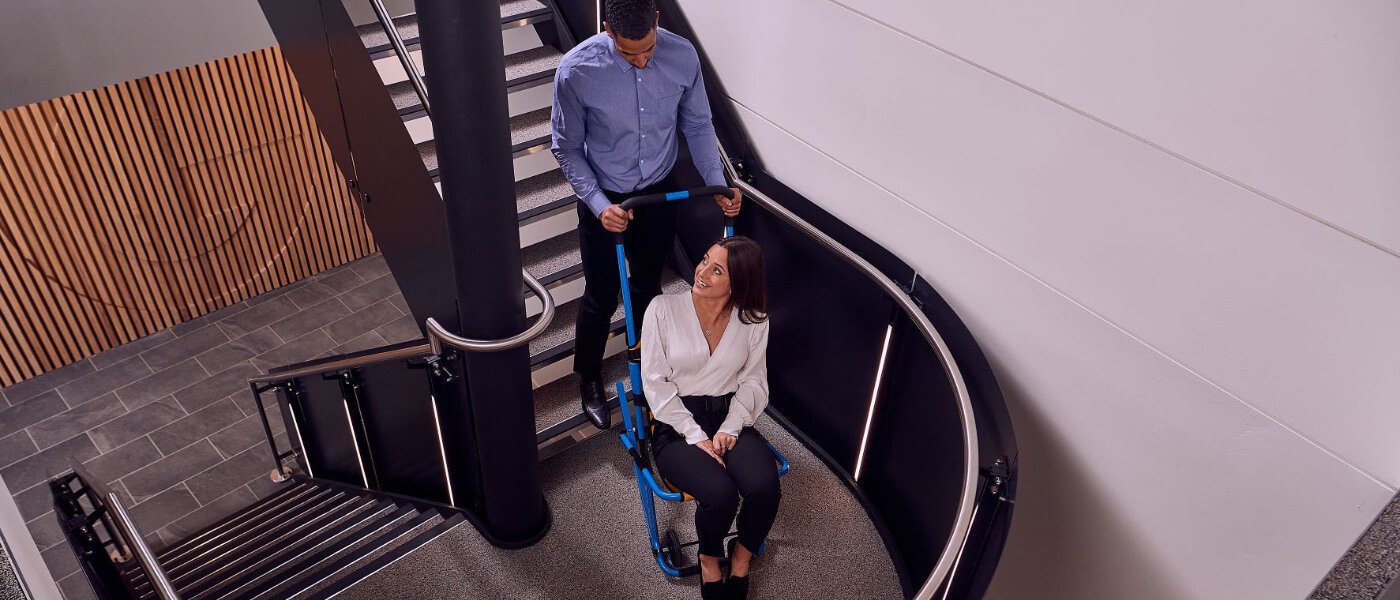
Frequently Asked Questions.
-
Emergency evacuations can be very chaotic, presenting a serious threat to the safety of people. Whatever the situation, an Evacuation Chair will provide safe and easy transportation for the less mobile. It is the best choice you can make for evacuating people who aren’t able to exit by themselves.
(An Evacuation Chair is a device manufactured for a smooth descent on stairways)
The Regulatory Reform (Fire Safety) Order 2005, requires that all people using the building be provided with adequate means of escape in case of fire. This includes a suitable escape plan for mobility impaired persons. (Personal Emergency Evacuation Plan)
Anyone permitted into a building must be safely evacuated in the event of an emergency without the dependence of the emergency services. There is a legal requirement for employers and service providers to ensure the safe evacuation of mobility impaired persons and Disability
Discrimination legislation places stringent demands on every organisation to meet its Duty of Care.
-
An Evacuation Chair is a device manufactured for a smooth descent on stairways and should only be used by trained personnel.
-
It is essential that when an Evac Chair is purchased a suitable training system is also implemented. For complete safety we advise two people are present at all times to assist and open doors on the exit routes.
Our course is designed to train key members of staff who have been given responsibility by their employer to assist in the evacuation of the mobility impaired within their premises. In line with the Regulatory Reform (Fire Safety) Order 2005. PUWER Regulation. (Provision and Use of Works Equipment Regulations 1998) and the Equality Act 2010
-
Course duration (Approx. 2.5 hours) up to 6 delegates per course.
A room for the theory will be required and a quiet staircase for the practical element of the training
(3 operators per 1 hour session to ensure safety at the top of the stairs)
-
Ideally, the equipment should be located in the locality where they are most likely going to be required. Their main aim is to assist people who require help getting up or downstairs to a place of safety in an emergency situation. They need to be clearly identifiable next to the stairwell that leads to an outside place of safety. All Evacuation chairs come with wall hooks to hang the chair on a dust cover and a sign to place above the evacuation chair.
-
You need to consider that during an emergency situation access is to the lifts is usually restricted for safety reasons. This usually means using the stairs which may be very difficult for anyone with limited mobility to accomplish unaided.
People who suffer from disabilities, which make using stairways difficult, will require additional support and equipment. This is your responsibility to provide specialist escape equipment .
-
Annual maintenance is essential, as a Class 1 Medical Device, your product should be inspected and maintained to ensure its safe operation and people’s health and safety is not at risk. This requirement is included within the PUWER Regulation. (Provision and Use of Works Equipment Regulations 1998).
See our annual 30 point check for more details.
-
The Regulatory Reform (Fire Safety) Order 2005 and The Equality Act 2010.
The Regulatory Reform (Fire Safety) Order 2005 gives a “responsible person” a duty in law to provide a safe means of escape to anyone within their premises, this will include anyone who may be less mobile.
The Equality Act 2010 states: “All businesses are required to ensure that their premises are accessible to persons who have mobility impairments.“
Employers will be required to make certain reasonable adjustments to the workplace, where arrangements of physical features of the premises are likely to place a mobility-impaired person at a substantial disadvantage, compared with an able-bodied person.
When an employer or service provider does not make the provisions for safe escape of mobility-impaired persons from its premises, this may be viewed as discrimination.
Everybody is entitled to the same chance of a safe escape in an emergency
Places of employment eg, care homes, schools, clubs, shops, offices and public buildings must provide adequate
